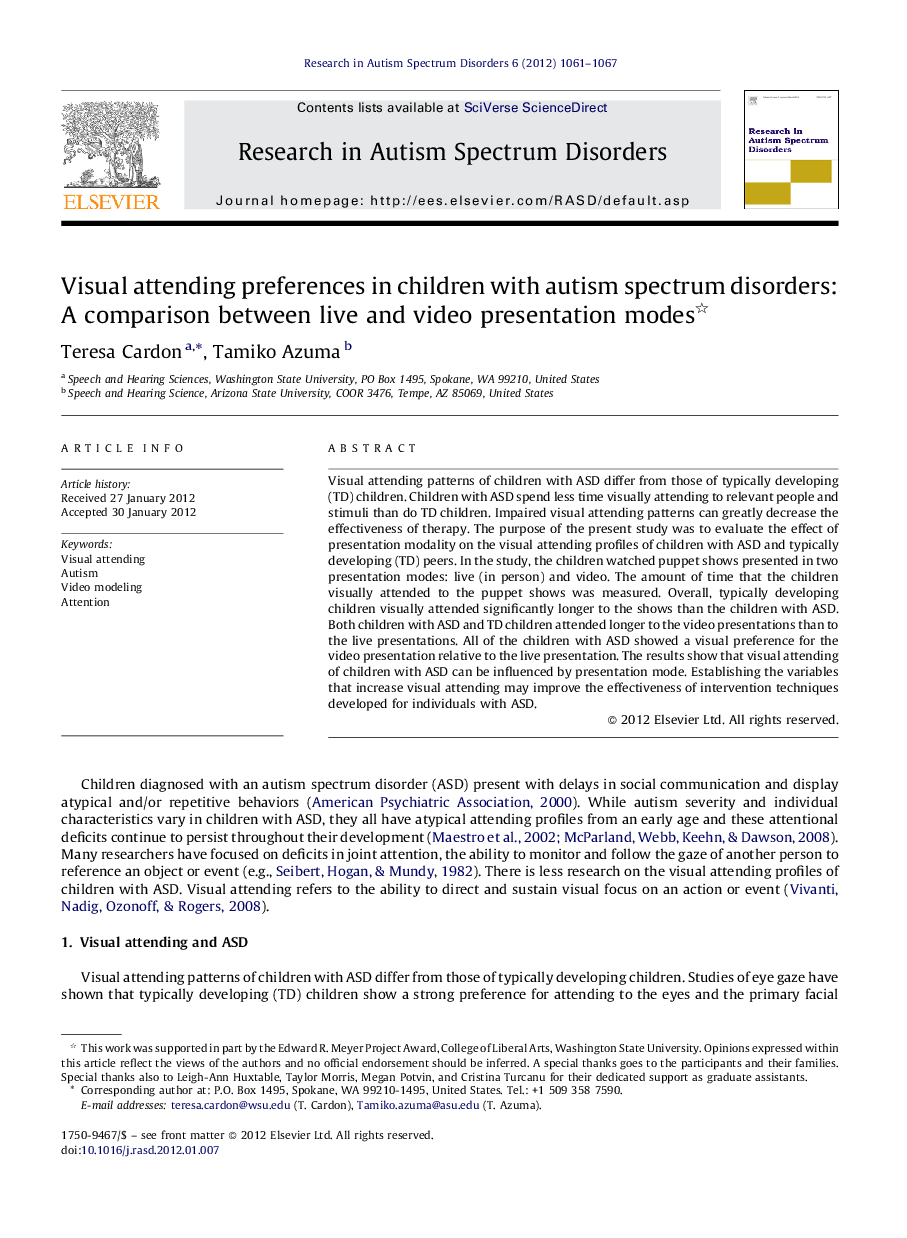| Article ID | Journal | Published Year | Pages | File Type |
|---|---|---|---|---|
| 370617 | Research in Autism Spectrum Disorders | 2012 | 7 Pages |
Visual attending patterns of children with ASD differ from those of typically developing (TD) children. Children with ASD spend less time visually attending to relevant people and stimuli than do TD children. Impaired visual attending patterns can greatly decrease the effectiveness of therapy. The purpose of the present study was to evaluate the effect of presentation modality on the visual attending profiles of children with ASD and typically developing (TD) peers. In the study, the children watched puppet shows presented in two presentation modes: live (in person) and video. The amount of time that the children visually attended to the puppet shows was measured. Overall, typically developing children visually attended significantly longer to the shows than the children with ASD. Both children with ASD and TD children attended longer to the video presentations than to the live presentations. All of the children with ASD showed a visual preference for the video presentation relative to the live presentation. The results show that visual attending of children with ASD can be influenced by presentation mode. Establishing the variables that increase visual attending may improve the effectiveness of intervention techniques developed for individuals with ASD.
► Effect of presentation modality on the visual attending profiles of children with ASD. ► Puppet show presentations to assess visual attending in two modes: live and video. ► All children attend longer to the video presentations than to the live presentations. ► Children with ASD show a preference for the video presentation. ► Variables to increase visual attending will help improve response to intervention.
